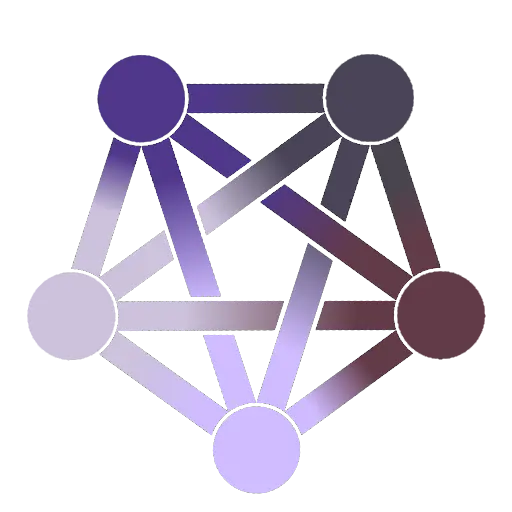Actually had a colleague who determined distances on microscopy images that way. She would measure the scale bar included in the image with her ruler on the screen, measure the distance she was interested in and calculate the distance using the rule of three. I mean, why bother using the measuring tool included in the software.
I’ve heard of people printing out charts, then cutting out the part they wanted to calculate an integral of, then weighing the paper.
I’ve heard of it too. You would need an analytical balance to get accurate measurements weighing a piece of paper. Just cut out the part you want to take an integral of, then cut out a piece of paper with known size (or cut several pieces with different sizes to get more accurate results) and weigh each of them. I guess this used to be cheaper and faster than using computers when computers were big and expensive.
Or maybe just a powder balance. When I was a kid in the 1960s, Dad did a lot of reloading his own ammunition. We kids had fun doing things like weighing our names (weigh a small piece of paper to get the tare, weigh again to get the loaded weight, subtract) and other miniscule things. As I recall, it was accurate to less than a grain (0.065 gram).
One of the things we did was weigh different shapes of paper to calculate area. Start with a sample of a unit area. Cut out a funky shape and weigh it, then do the math.
Nono that’s genius
…ignoring the part that it’s just a discrete approximation of an integral a la a Riemann sum.
How thick is your paper?
How inaccurate is your scale?
How precise are your scissors?
How funky is your chicken?
I was reading an old book about chromatography in laboratory and they exactly describe this method to determine the amount of substance.
That’s pretty clever!
That was a common way to do it before computers were common.
If it works it isn’t stupid.
I’m guessing she didn’t make any zoom either
Better than counting curly braces.
I’ll take the curly braces
Me too, any day. I hate everything where indentation matters. Let me just throw my garbage there and YOU sort it out, you are the fucking computer, not me. You do the work.
So fuck you, YAML! All my homies love JSON!
All your homies hate comments.
My code also documents itself, of course.
Yeah Yaml is nicer than json, but I’m not into the Python indenting at all.
I’m here to spread the good word about JSONC. It is the way and everyone should adopt it in place of JSON wherever possible.
Yup.
Spaces? Tabs? Don’t care, works regardless.
Copied some code from somewhere else? No problem, 9/10 times it just works. Bonus: a smart IDE will let you quick-format the entire code to whatever style you configured at the click of a button even if it was a complete mess to begin with, as long as all the curly braces are correct.Also, in any decent IDE you will very rarely need to actually count curly braces, it finds the pair for you, and even lets you easily navigate between them.
The inconsistent way that whitespace is handled across applications makes interacting with code outside your own code files incredibly finicky when your language cares so much about the layout.
There’s an argument to be made for the simplicity of python-style indentation and for its aesthetic merits, but IMO that’s outweighed by the practical inconvenience it brings.
But, nobody ever copies code from Stack Overflow!
Even vim can show you that
^(fucking nano user)There’s a joke here about using
echo "some python code" > main.pyin here somewhere but I can’t find it. Imagine I did instead.Import python.Joke.ShellProgramming()“the punchline is clearly trivial, the set-up is left as an exercise for the reader”
Obligatory mirco is better.
Is mirco a little man sitting on your SSD flipping bits manually as you dictate him?
No that’s macro. Micro is when small gnomes sit inside your HDD and moving the read/write head around manually.
deleted by creator
parentheses
You don’t usually count them. They just have to form a neat diagonal.
Also, highlighted the way you expect when you click next to braces works too.
Why not both
Because Python uses indentation instead of curly brackets, which is why this meme exists. Also jetbrains ide s like pycharm and webstorm do all of this for you.
Even the mosy basic text editors does indentation for you, not even an IDE needed
Not as good as jetbrains does, it automatically does things like realign when you paste things and lots of little things that improve the coding experience by a lot.
Okay cool!
yep.
Have you tried using an auto formatter? Let’s you write code however and fixes the structure automatically on save. It’s way easier for me to write curly braces then hit ctrl+s than have to select multiple lines manually and tab in and out. I feel the biggest gains I’ve made in productivity came after I learned to embrace tooling.
deleted by creator
People here are taking this way too seriously lol. I love Python, and I never really had any issues with the indentation being used instead of curly braces or something. This is just a silly meme, not a personal attack
Precisely. It’s like programmers lost their humor.
I have not known happiness for 12 years now.
Had humor? /s
Humor is hard for autists.
(Disclaimer: am autist)
I really like the identation aproach, or begin/end instead of curly braces or parenthesis. When people start to nest things too deep, it gets painful to look at.
Then you never had to share a codebase with someone who had different ideas about how things should be indented.
Hmmm nope. That sounds like hell indeed
Right? Especially since there are plugins for VS Code that colorize the indents.
VSCode? Is that an Emacs extension? Or is it for vi?
It’s a bash script made to be run on MS-DOS on a breadboard computer.
bash
MS-DOS
r u a wizard
I shall henceforth take the title of wizard.
Sadly neither, but it’s Vi plugin is nearly perfect.
Oooh whats a good one called?
I’m not at my computer right now, but I think the one I use is called indent-rainbow.
Let me introduce you to YAML, you’ll love it!
Ugh, there’s some parts of YAML I love, but ultimately it’s a terrible format. It’s just too easy to confuse people. At least it has comments though. It’s so dumb that JSON doesn’t officially have comments. I’ve often parsed “JSON” as YAML entirely for comments, without using a single other YAML feature.
YAML also supports not quoting your strings. Seems great at first, but it gets weird of you want a string that looks like a different type. IIRC, there’s even a major version difference in the handling of this case! I can’t remember the details, but I once had a bug happen because of this.
Performance wise, both YAML and JSON suck. They’re fine for a config file that you just read on startup, but if you’re doing a ton of processing, it will quickly show the performance hit. Binary formats work far better (for a generic one, protobuffers has good tooling and library support while being blazing fast).
It’s so dumb that JSON doesn’t officially have comments.
So much this.
Used to work at a company where I sometimes had to manually edit the configuration of devices which were written and read in JSON. Super inconvenient if you have to document all changes externally. As a “hack” I would sometimes add extra objects to store strings (the comments). But that’s super dicey as you don’t know if it somehow breaks the parsing. You’re also not guaranteed the order of objects so if the configuration gets read, edited and rewritten your comment might no longer be above/below the change you made.
Always found it baffling that such a basic feature is missing from a spec that is supposed to cover a broad range of use cases.
json 5 does support comments. alternatively, yaml is a superset of json. any valid json is also valid yaml. but yaml also supports comments. So you can also write json with comments, and use a yaml parser on it, instead of a standard json parser
One of these days I’ll actually look up how YAML indentation works. Every time I use it it’s trial and error until I stop getting errors.
That’s a super risky way to do it. It might stop giving you errors because you finally got the indentation right, or it might stop giving you errors because you got the indentation “right” but not how you you meant to organize the objects.
I got my hair torn out till I setup my home assistant. I f*cking hate it its stupid
@alphacyberranger
This is why I have my VSCodium set to highlight all indentation levels in my settings.jsonTo see the editor indent guides, set “editor.guides.indentation”: true and “editor.guides.highlightActiveIndentation”: true.
editorIndentGuide.background: Color of the editor indentation guides.
editorIndentGuide.activeBackground: Color of the active editor indentation guide.Can you please share a screenshot of how this looks like?
Here’s the relevant section of my settings.json
json { "workbench.tree.renderIndentGuides": "always", "workbench.tree.indent": 15, "editor.guides.indentation": true, "workbench.colorCustomizations": { "editorIndentGuide.background": "#fd6bff", "tree.indentGuidesStroke": "#fd6bff" } }
Programming languages that use white space to delimit structure are annoying at best. I get annoyed at yaml too, but I’m ok once I have a few templates set up.
YAML comes with its own unique pains in the ass https://ruudvanasseldonk.com/2023/01/11/the-yaml-document-from-hell
These things actually matter, come up often enough to actually be annoying, and are a bit difficult to explain and learn into people. You’re basically fine if you just string quote everything that you can, but nobody does that.
That was interesting. And possibly the most Dutch name I have ever heard of.
Is Dutch name. Source: am Dutch.
Use TABS guys TABS.
Tabs suck. Use a real editor and spaces work fine.
Why tabs suck? Explain.
Tabs are neat.
Does you app have too many nested functions?
Use tab width = 2
Do your app have too less nested functions?
Use tab width = 8
Is your app having average number of nested fns?
Use tab width = 4(mostly default)
And all theese can happen without modifying a single byte in the source file, unlike spaces!
Except that you have to either indent with only tabs or indent with only spaces. Any time you mix tabs and spaces you are just asking for disaster.
If you indent with only tabs you can’t align things except on tab boundaries. If you have a function that takes 10 parameters and want to do it on multiple lines, the alignment of the extra parameters is going to be ugly.
If you indent with only spaces, you can indent things so that all the parameters line up directly underneath the parenthesis, for example.
I agree we shouldn’t mix tabs with spaces. But use tabs always. I could line up parameters together but may not be just under parentheris, and it looks good and readable for me
I think it looks like ass, so only spaces for me.
Yeah who tf isn’t using tabs as spaces, it isn’t 2010
Most disingenuous post ever.
The image shown is a dude with a browser dev console, probably measuring a div for the its CSS size (which do support centimeters and inches).
In python, 4 spaces is just enough spacing between indent levels. And if your levels get too deep it’s a sign that you’re not being pythonic. Nesting too deep is the problem, not the whitespacing being significant.
Python are fine with whatever number of spaces you want to use. You can use 8 spaces which forces you carefully consider each nest, you can use 1 if you’re a monster, or you can use tabs if you’re enlightened, python only demands consistency.
Yeah I remember picking up a script after a reinstall, and gedit had reverted to default settings. It’s fun trying to spot whether it’s 1 tab or 4 spaces. After that day, I switched to two spaces as my default.
All theese indentation issues arises from using spaces instead of tabs. And tabs are really flexible so that everyone can set their text editor to whatever tab length they want and still be consistant
This post on programmer humor is now funnier as a result of your analysis. Everything is funnier when it is 100% accurate.
Why not TABs? I hate 4 spaces cuz it can get real messy sometimes.
My editor turns tabs into 4 spaces. No more “mixing tabs and spaces” errors afterwards.
Thats the problem. Then you commit. I clone it. I can’t use tabs because you turned everything into spaces. Why not turn spaces into tabs?
I normally love tabs and it’s what Go uses both by convention and it’s semi opinionated formatter. But PEP-8 suggests spaces and ultimately, consistency is more important.
Not having to argue about tabs vs spaces lets us focus on the real problems, like vim vs emacs.
I am aware but don’t know why four spaces is suggested. Tabs are consistant and flexible. Using spaces might cause errors in number of spaces and makes code messy.
Also emacs for the win
spaces or tabs
Doesn’t PEP 8 say spaces somewheres?
4 spaces, although I’ll die on the hill that tabs should always be used instead of space for indentation. Not just in python.
- Use tabs.
- Enable visible whitespace.
Tada, your indentation level is nicely visible.
Tabs. But really with modern IDE it’s irrelevant. Whatever the tech lead says I guess.
With things like black, flake 8 and Isort I can code however I want, list/format however I want, and commit team compliant content. The dream is real
Wait wait wait, what is this black magic and how have I not heard of it?
So you can have a local, and a team config. So at time of commit the code rules your team has selected are enforced. So if I looked at my code, on GitHub, it would look as expected by the team.
If I load it locally, it formats as I like.
Check out the cicd stuff on PRs for github
I love such formatters and wish they were even more widespread. In many cases, I really want consistency above all and it’s so dang hard to achieve that without an opinionated formatter. If the formatters isn’t opinionated enough, it just leads to countless human enforced rules that waste time (and lead to an understandable chorus of “why can’t the formatter just do that for meeeee”).
Yeah but outside of that where the code is implemented or in a documentation, tabs are still easier to look through. And it does look pretty as long as there aren’t too many nested functions.
Even with nested functions tabs are neat.
Does you app have too many nested functions?
Use tab width = 2
Do your app have too less nested functions?
Use tab width = 8
Is your app having average number of nested fns?
Use tab width = 4(mostly default)
And all theese can happen without modifying a single byte in the source file, unlike spaces!
Questions like that are likely to start a war
semicolons
Full colons
4 Spaces, then one tab, then 3 spaces, then 2 tabs, then 2 spaces, then 3 tabs…
Python supports that (and I hate this)
Please elaborate (eg which standard is this defined in?)
Not any standard (and actually not at all something to do for real), but try it, it works
def magic(a, b, c): if a > 0: if b > 0: if c > 0: return 'All positive' return 'Not all positive' print(magic(1,2,3)) print(magic(-1,1,2)) print(magic(1,-1,0)) print(magic(-1,-1,-2))(you should be able to verify I used both tab and spaces f*cking bad way in this example, like I described)
Output:
All positive Not all positive Not all positive Not all positive ** Process exited - Return Code: 0 ** Press Enter to exit terminalThat’s really interesting. So does that mean the interpreter just checks whether the current line is more indented, less indented, or equal vs. the preceding, without caring by how much?
“indentation is indentation!” (mr_incredible_cereal.jpg)
it may look messy, but would you actually rather Python didn’t support some inconsistency when the intent is clear?
being exact just for the sake of being pedantic isn’t useful.
I don’t think this is a huge problem with a correctly set up text editor and the right techniques to limit code nesting. Doesn’t change my dislike of python tho.
He could wrap a rubber band around the screen
Spoken like a fellow professional Python programmer.
I started with Perl. This taught me a certain mindset that works well with Bash and Ruby. I’ve tried to learn Python several times and I just fucking hate it. I gave up when I realized that it just doesn’t work the way that my brain works.
I wonder if the outcome would have been different if I’d started with Python? How might that have shaped my thinking / reasoning? Fwiw, I was also ok with PHP and SQL, but I don’t know much or anything about the backgrounds on those foundations. Maybe my above statements were completely bullshit.
I used to love Perl as it worked the way my brain worked.
Then I started taking medication for ADHD.
I haven’t used Perl since except for text parsing, it’s an absolute hot mess of a language (though very powerful and functional at the things it does well)
That’s super interesting.
I have a mental divergence that isn’t ADHD. I was reviewing stats on it that said people who have it are some percent more likely to have ADHD. I wonder if my previous enjoyment of Perl is because I’m on an ADHD spectrum. It would be interesting to find out.
I kind of started with Python, and I hate Perl. Relying so much on global variables like $_, @_, $1, $2 is just the worst idea ever. Oh you want to call a function? Better be safe and backup all global variables you’re using, because they will be overwritten! Want to use some regex in a function? Better ensure all callers have made backups of the $1, $2, $3 variables.
The end result is just large amounts of defensive boilerplate everywhere because things will break if you don’t.
There’s also no good way to tell which functions use $_ without looking up the docs or keeping everything in memory.
The only merit Perl got in my opinion is its regex support. Quite handy for bash one liners time from time.
Just draw whitespace…
deleted by creator
And that is why I don’t bother with that garbage. C++ for life
Python syntax is the absolute worst
Why do you believe that?
Not the previous commenter, but using indentation as syntax rather than an aid to understanding tge program structure is just painful when you come from any more conventionally structured language. The meme above may be an exaggeration, but it’s not much of one. An IDE can probably help, but needing one just to be able to more easily read the code is excessive.
That said, it’s a popular language and there are plenty of useful libraries, so sometimes the trade off is worth it.
I’ve programmed Python mostly without IDE without any problem. It’s no more difficult to understand the structure of the program than a bracketed language.
Don’t get me wrong, I know it’s quite possible, I find it just grates when you’re used to braces and semi-colons. They’re sort of a standard across many languages, and is an extra mental gearshift to python syntax.
To each their own. If I’m going to bother intending all of my code may as well benefit from it. I don’t actually use Python that much and don’t love it but I am a fan of significant indentation. But most honestly it isn’t a big deal either way. While I would be happier if my preferred language had significant indentation it is very unlikely to be something that convinces me to use a language or not.
Coming from C++ and Java over to Python was challenging. The IDE I used at the time also did not like when I used tabs instead of spaces, which drove me up a wall.
I will say that for beginners where python is their first language, it does a good job at reinforcing good practices for writing legible code.
I even coded my first few python programs in nano text editor without any annoying indentation issues. I use TABs btw. Problems usually happen when people mix tabs with spaces
Ah, now we stray into ‘holy war’ teritory. I’d agree with you should use tabs, but the language style guide says 4 spaces per level. As you saym don’t try to mix them.
Most projects nowadays use auto formatting tools for convenience. Any python auto formatting tool will automatically convert tabs to spaces. Tabs are a no no in python, as their rendering might depend on the settings of the IDE. Spaces are nice and constant.























